Earn local rankings that stick: precise keywords, fast pages, and conversion-first content, crafted by a damage restoration SEO agency.
5.0



Running a restoration business means juggling tight schedules, budgets, and dependable techs: all while managing insurance delays, rising costs, and nonstop paperwork. No wonder marketing takes a back seat. You need a system that keeps leads coming in, even when you’re on-site or buried in claims.
With 60,000+ restoration companies nationwide, big franchises dominate with larger budgets, better tech, and insurer connections. Competing locally means standing out online, and that’s where SEO for restoration companies delivers.
We’re an SEO agency that has helped 90+ restoration companies boost visibility and drive steady, qualified leads. This guide walks you through the same restoration SEO strategy we use, so you can get more calls and grow without overspending.
Next, we’ll break down the exact restoration SEO process, starting with how to find and target the right keywords to attract your best-fit jobs.
When water or fire damage hits, property owners type exactly what they need; searches like:
That’s why your keyword strategy needs a mix of keywords: general, service-specific, and local. Service-specific terms are often easier to rank for and still bring solid search volume, meaning more qualified leads with less competition.
Start by defining your core services, such as:
Next, use tools like SEMrush, Ahrefs, or Google Keyword Planner, or simply run Google searches to see what competitors rank for. Check their titles, meta descriptions, and People Also Ask or Related Searches sections; they’re goldmines for keyword ideas.
This research will help you map out your site structure and identify the pages you’ll need, something we’ll dig into next.
Before that, let’s look at high-opportunity “water extraction” keywords across the U.S. that combine low competition with strong search volume, plus local terms that attract nearby, high-converting customers.

Also, let’s not forget the opportunity of local searches. For example, below is a list of keywords around “water damage” that have strong local intent, perfect for attracting high-converting users in your area.
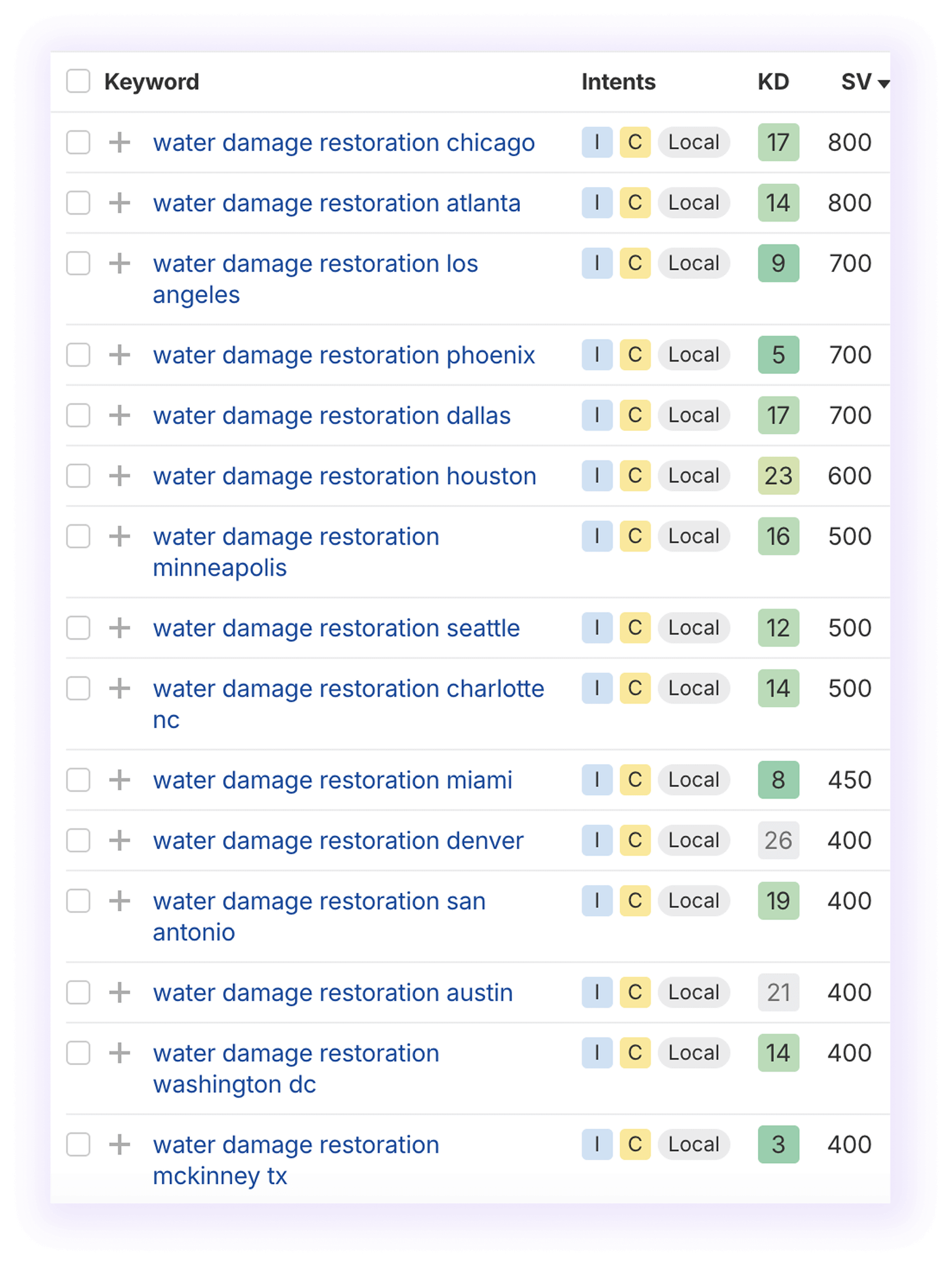
These keywords show just how much opportunity exists in restoration SEO. Every service, city, and search adds a chance to get found first. If you want a strategy tailored to your services and markets, contact us, and our team can help map it out.
Once you’ve gathered your target keywords, use them to build a clear website hierarchy. Each leading service and keyword should have its own page, organized so Google can easily navigate your content.
Every restoration site needs three essential pages:
Once these pages are built, add them to your main navigation. This helps homeowners find help quickly, and signals to Google which pages matter most.
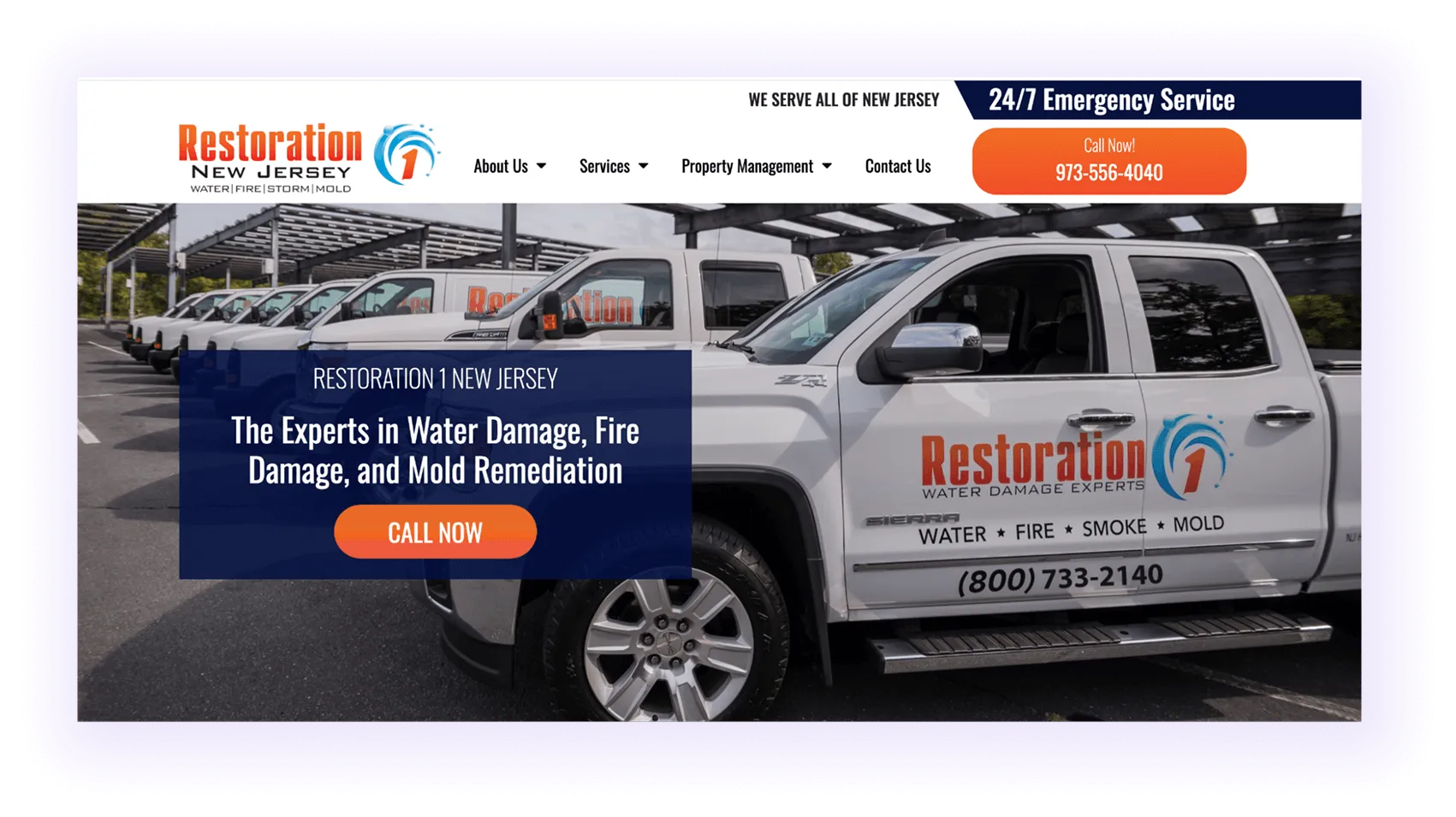
As we already said, property owners usually look for a specific service, like:
To capture those searches, create a dedicated page for each service. This helps Google rank every service separately and ensures customers land exactly where they need.
Once built, list all services under a main “services” tab with a clear drop-down menu to make them easy to find.
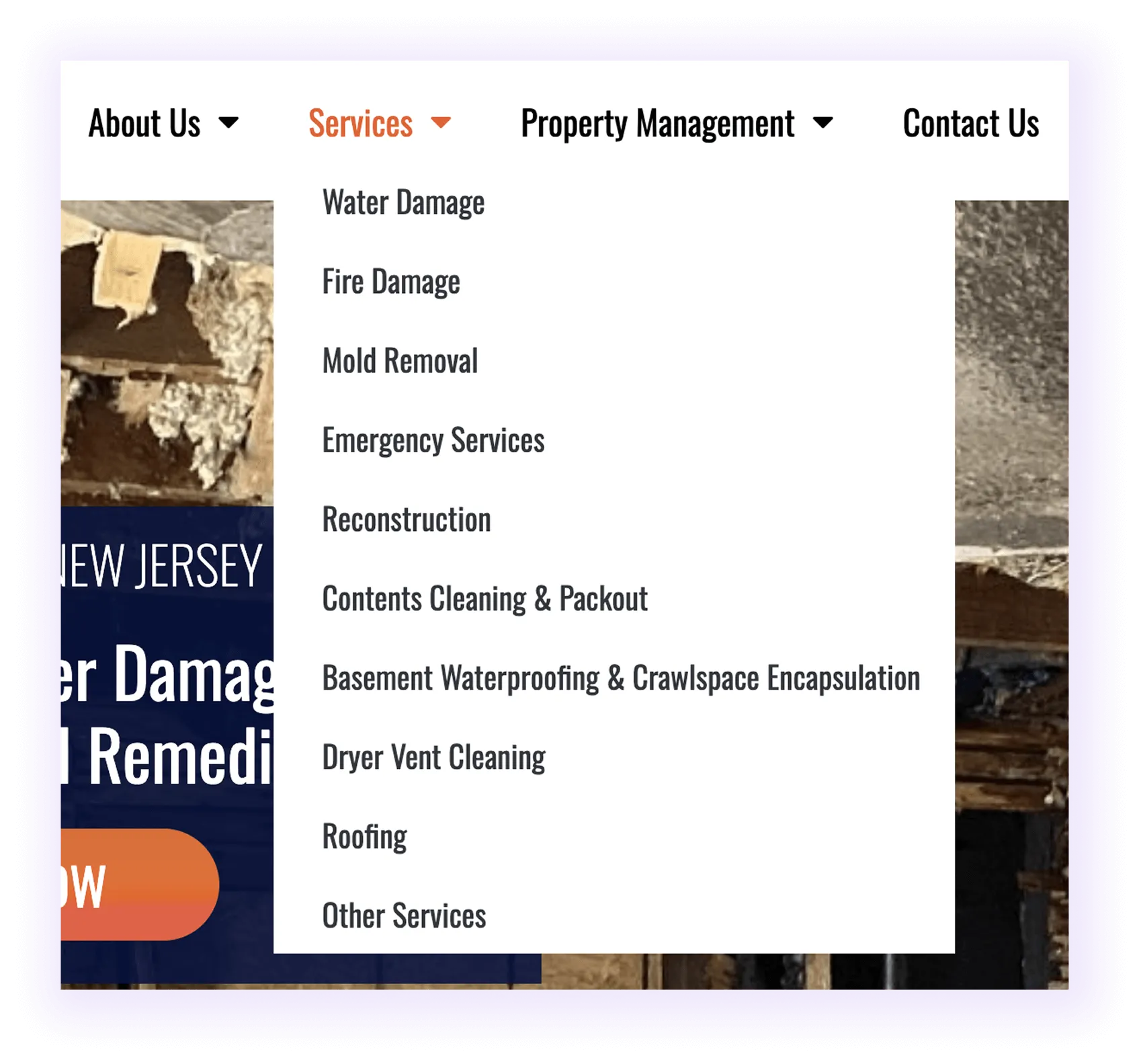
If your restoration company serves both residential and commercial clients, create separate pages for each. This helps target distinct audiences and keywords.
Use a drop-down or mega menu to organize subpages, such as:
You can also highlight the industries you serve, like education, government, healthcare, or hospitality.
This structure diversifies your keywords, improves navigation, and helps users quickly find the right service type.
Some restoration companies list industries under “commercial services,” while others give them a dedicated menu link; either works as long as it’s easy to find (see below).
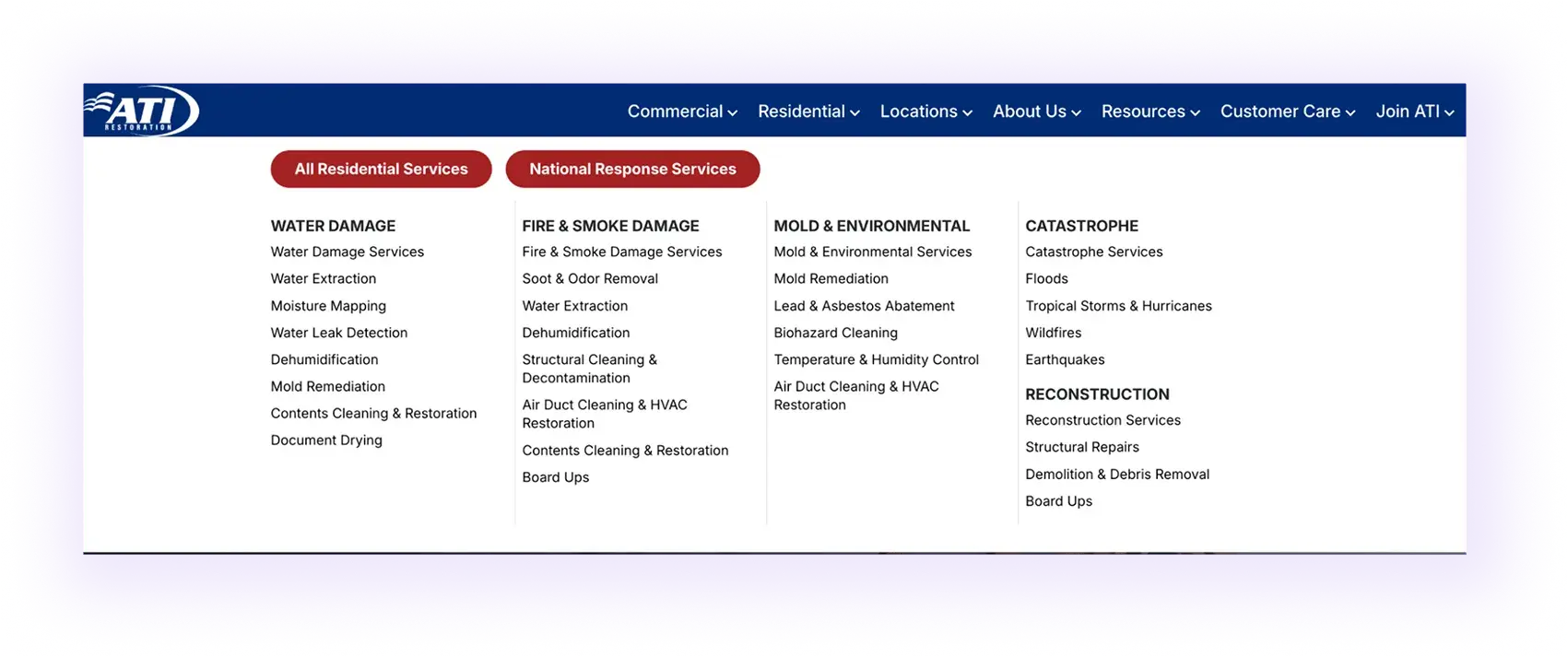
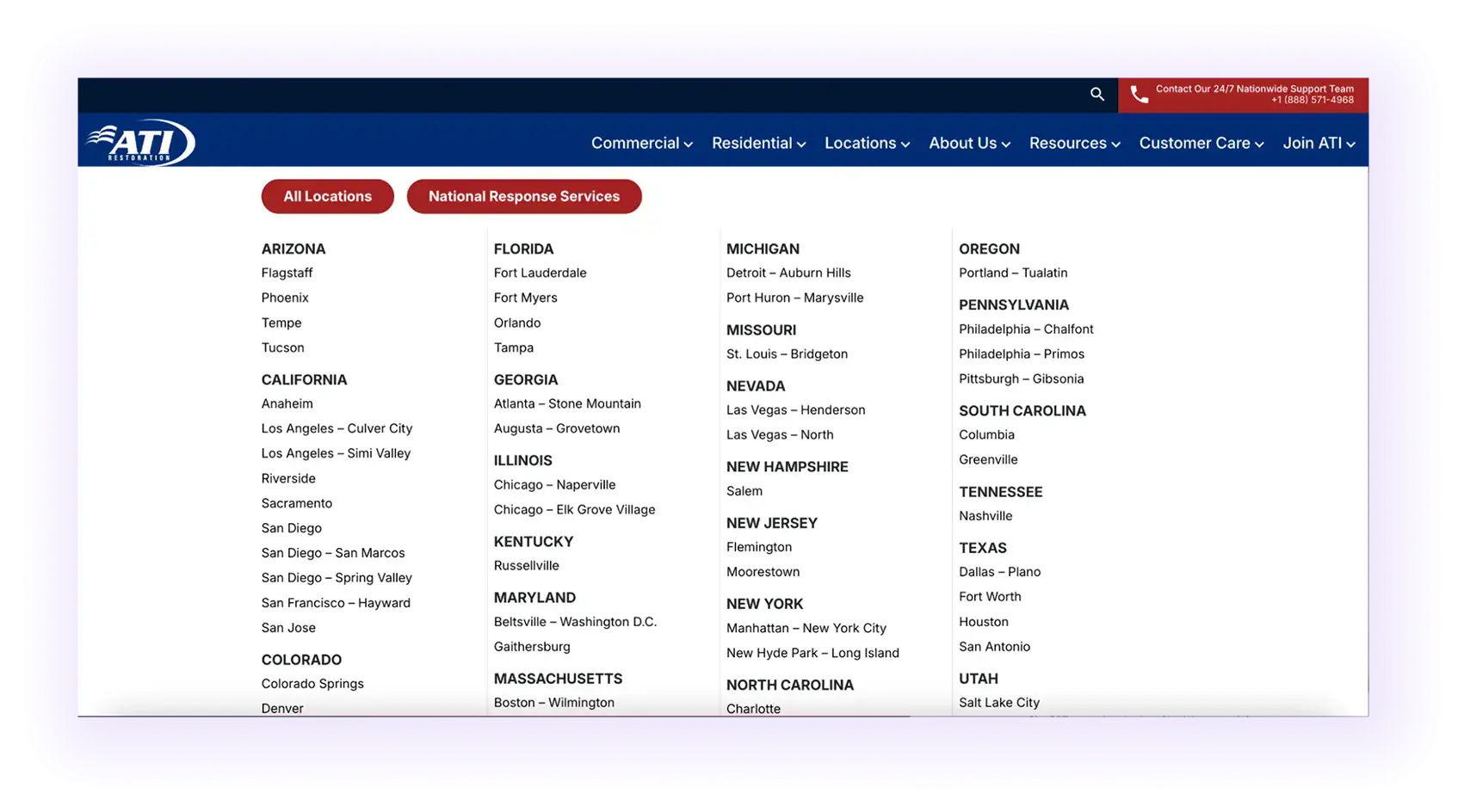
When floods, fires, or mold hit, property owners search fast and locally. They’re typing things like:
To show up for these searches, create a dedicated page for each service area. Local pages help you rank in nearby searches and connect with customers ready to call.
Link these pages from your main navigation, footer, or within your content so both users and Google can easily find them.
Navigation bar example:
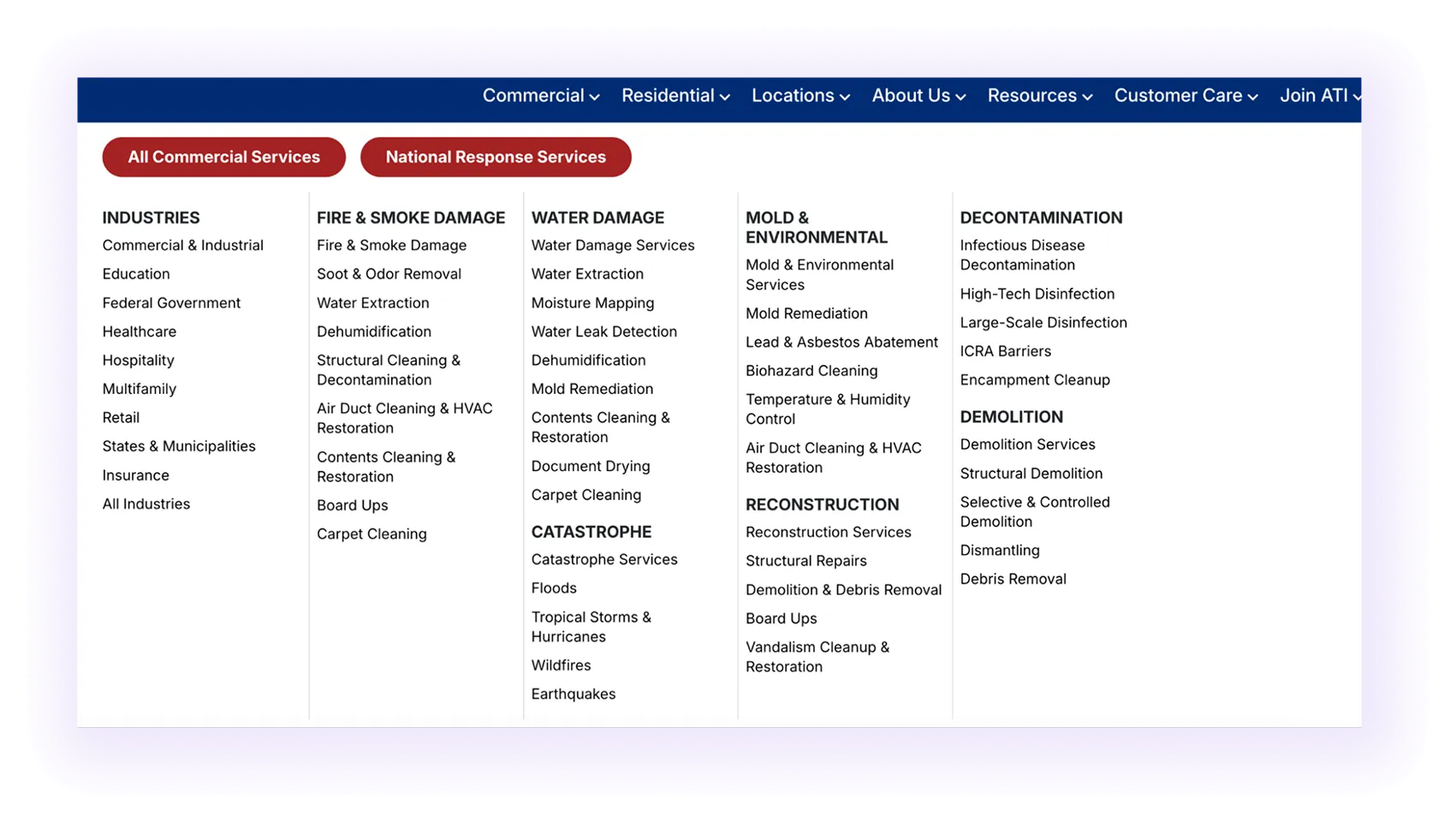
Footer example:
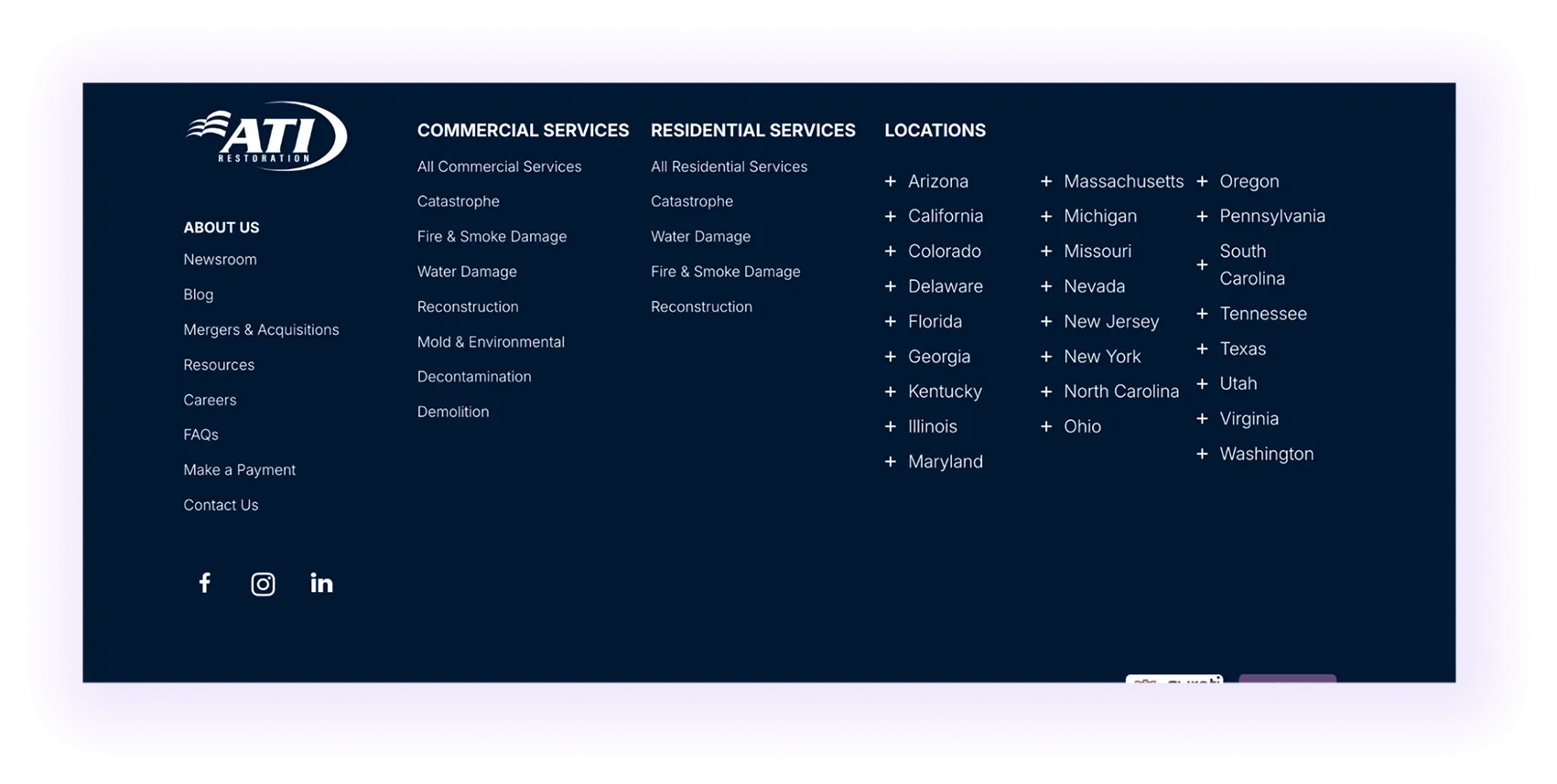
Not everyone searches for restoration help right away; many start with questions like:
Blog content lets you capture these early searches. By answering fundamental questions, you show expertise, build trust, and keep your brand top of mind.
When those readers eventually need professional help, they’ll search for your company, boosting both leads and Google’s trust in your site.
Stop Guessing Your Restoration Website Structure—We Will Show You Exactly What Pages You Need
Your site structure should match your market: what services matter most, where demand is highest, and how clients search in your area. Contact us, and our restoration SEO team will help you get it right, just as we’ve done for 90+ restoration companies nationwide.
You’re done with the first two steps, and it’s time to build on your local restoration SEO.
Restoration companies generally fall into two groups:
No matter your size, two key strategies can help you rank faster and win more local leads.
If you serve one city or region, make that location clear across your site. Add your city name to key areas like titles, headings, and meta descriptions; for example, “restoration company in boston” or “water damage cleanup boston.”
Apply this to service pages too (example: “water damage restoration boston”). Local keywords help Google recognize your area focus and rank you higher in nearby searches; just keep them natural and readable.
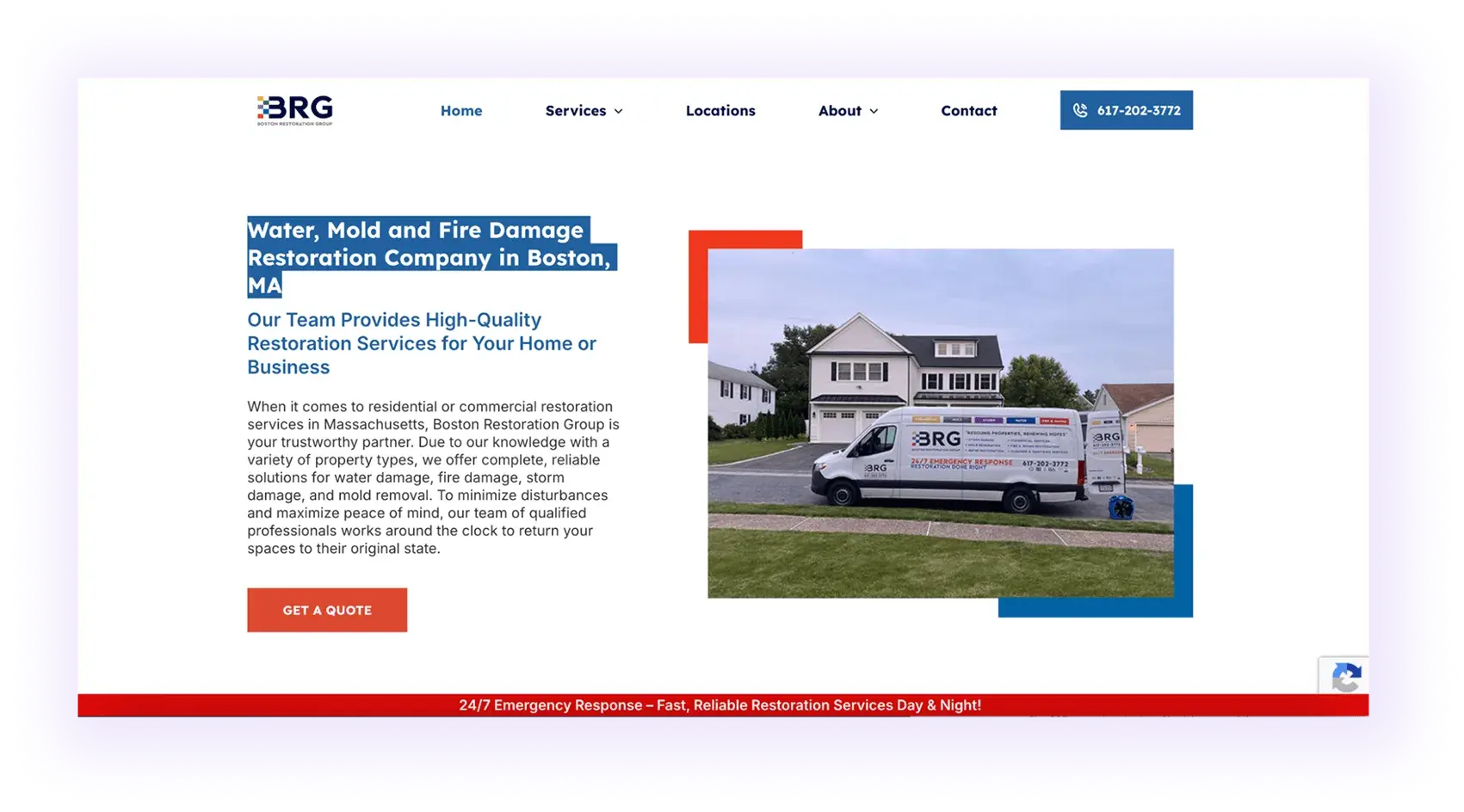
For multi-state operations, structure your site so each region has its own page. That way, you can target searches like “water damage restoration florida” or “fire cleanup houston” without cluttering your homepage.
Use your keywords naturally in headings, meta descriptions, and image alt text to help Google understand your content and improve your chances of ranking for each location.
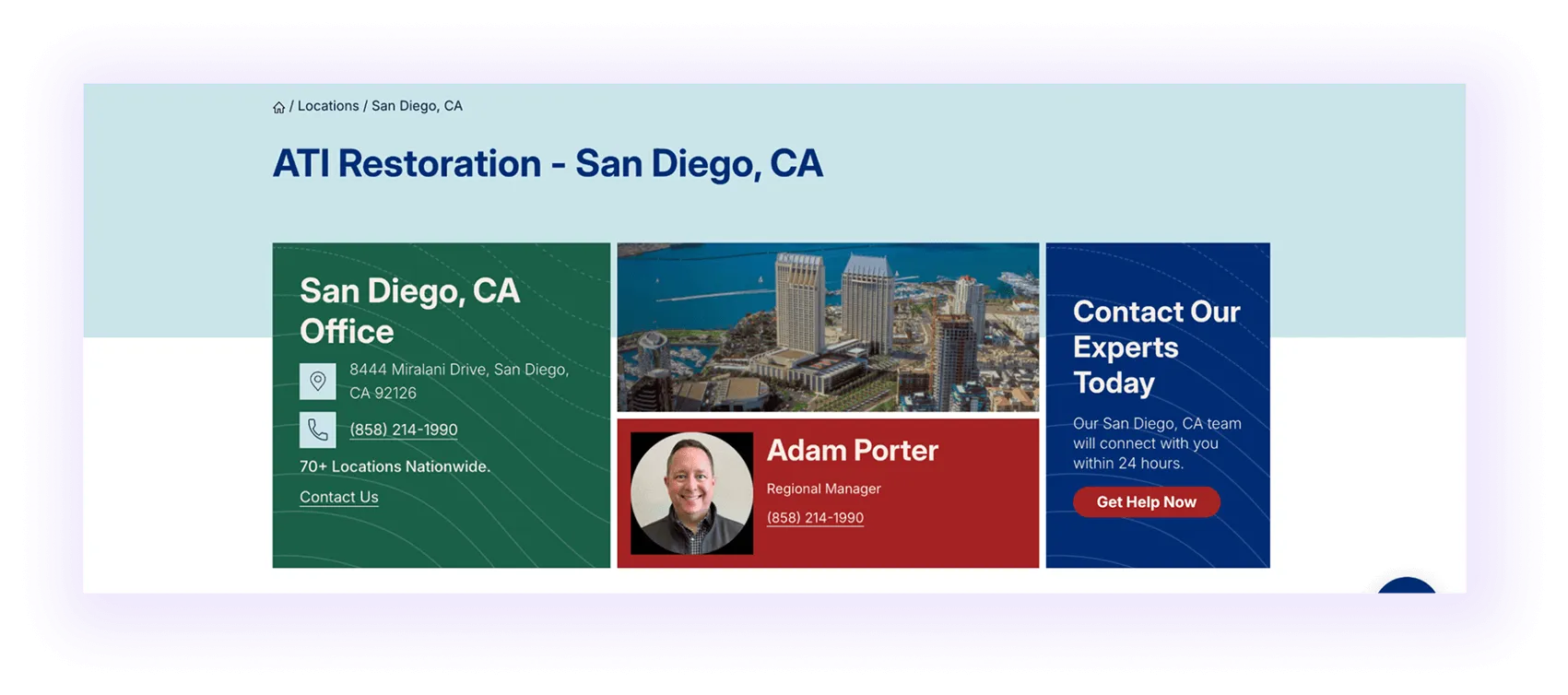
Use location keywords naturally in titles, headings, and image alts to boost local relevance. Then, connect all these pages through a central location or service areas hub; ideally with clean URLs (see below).
This setup helps Google index each area separately.
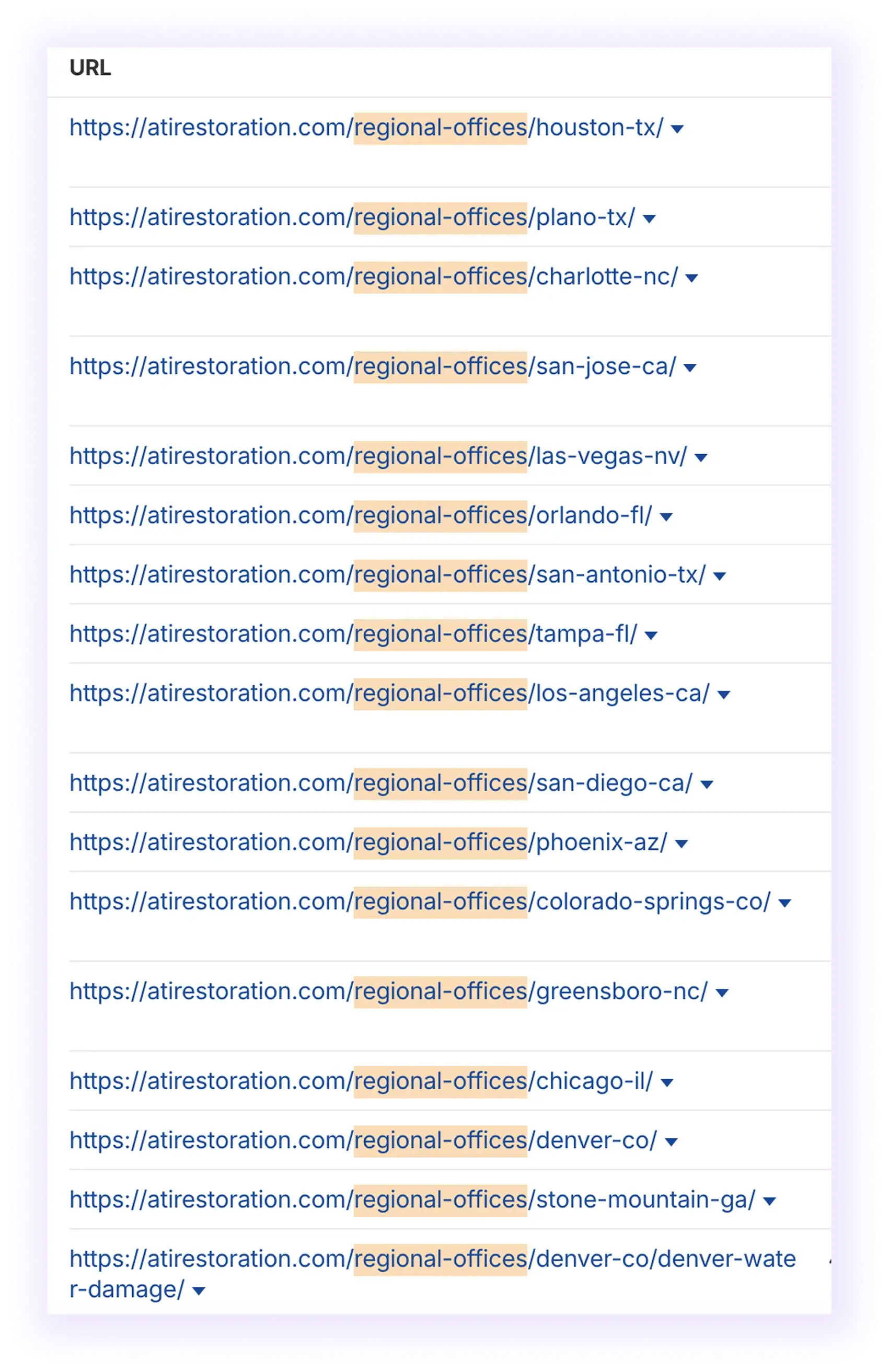
Once your site is optimized for local SEO, claim and optimize your Google Business Profile to appear in Google Maps results. When someone searches “flood damage restoration in boston”, Google often shows nearby companies; your goal is to be one of them.
Here’s how to set it up right:
Here is an example:
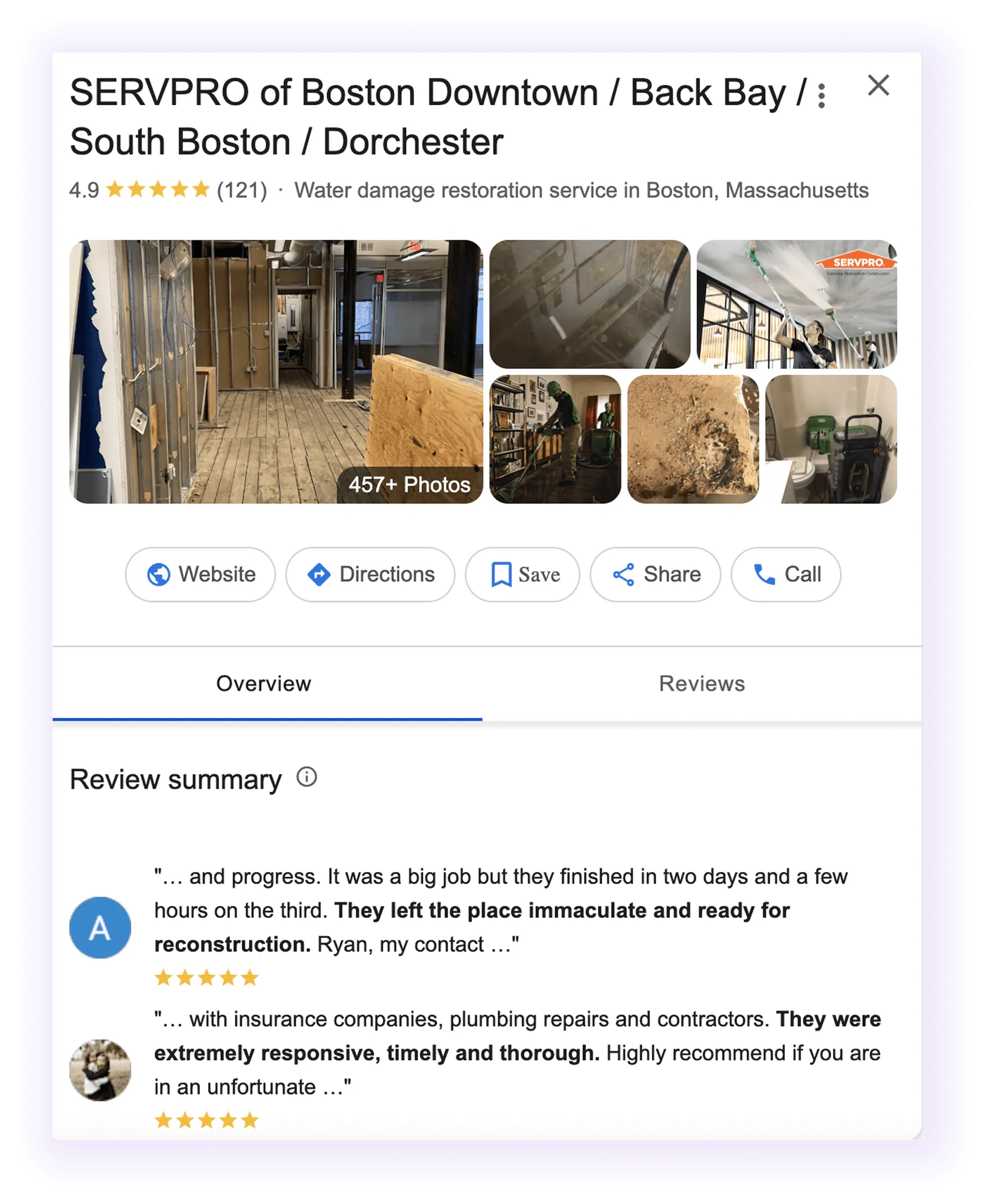
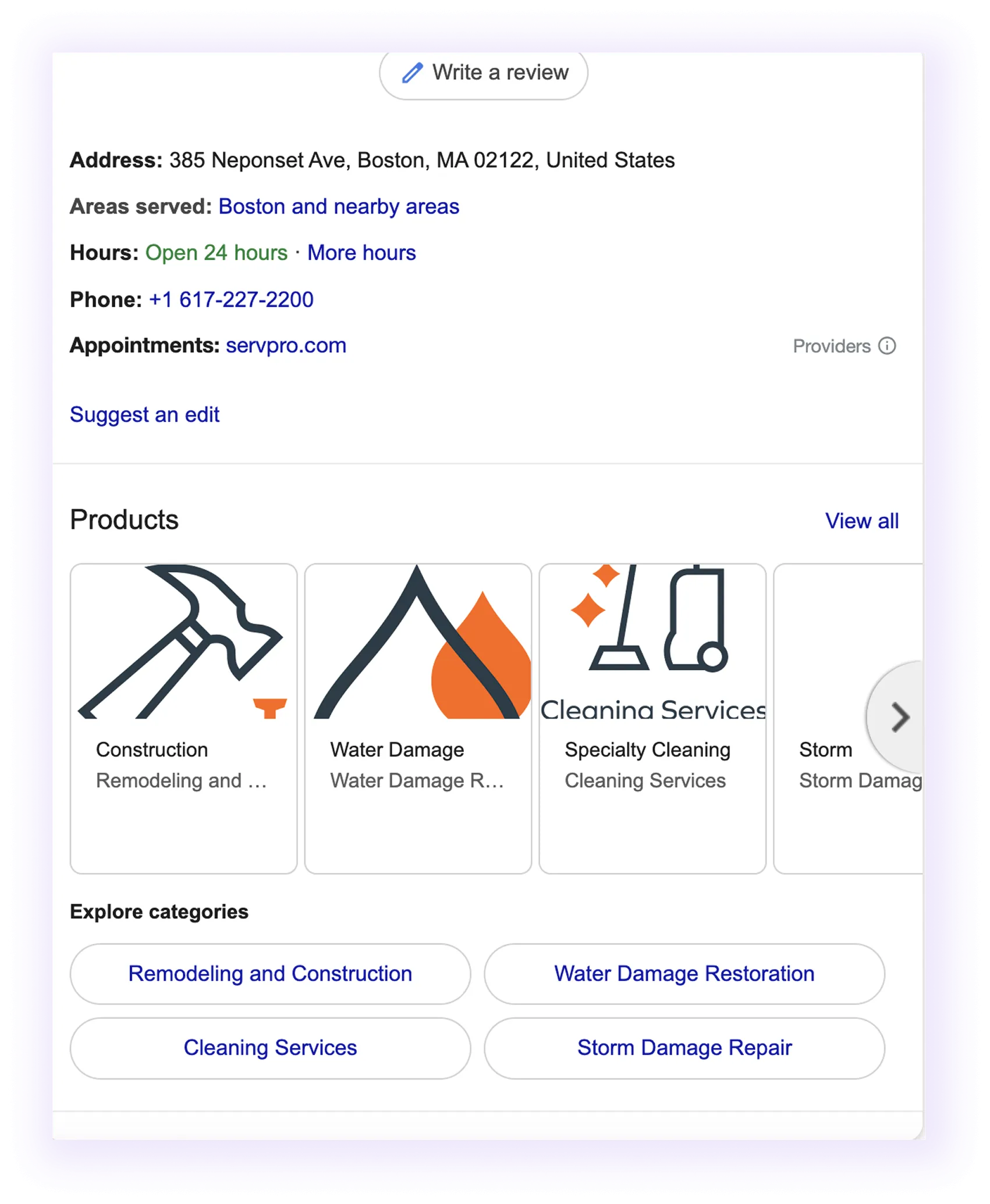
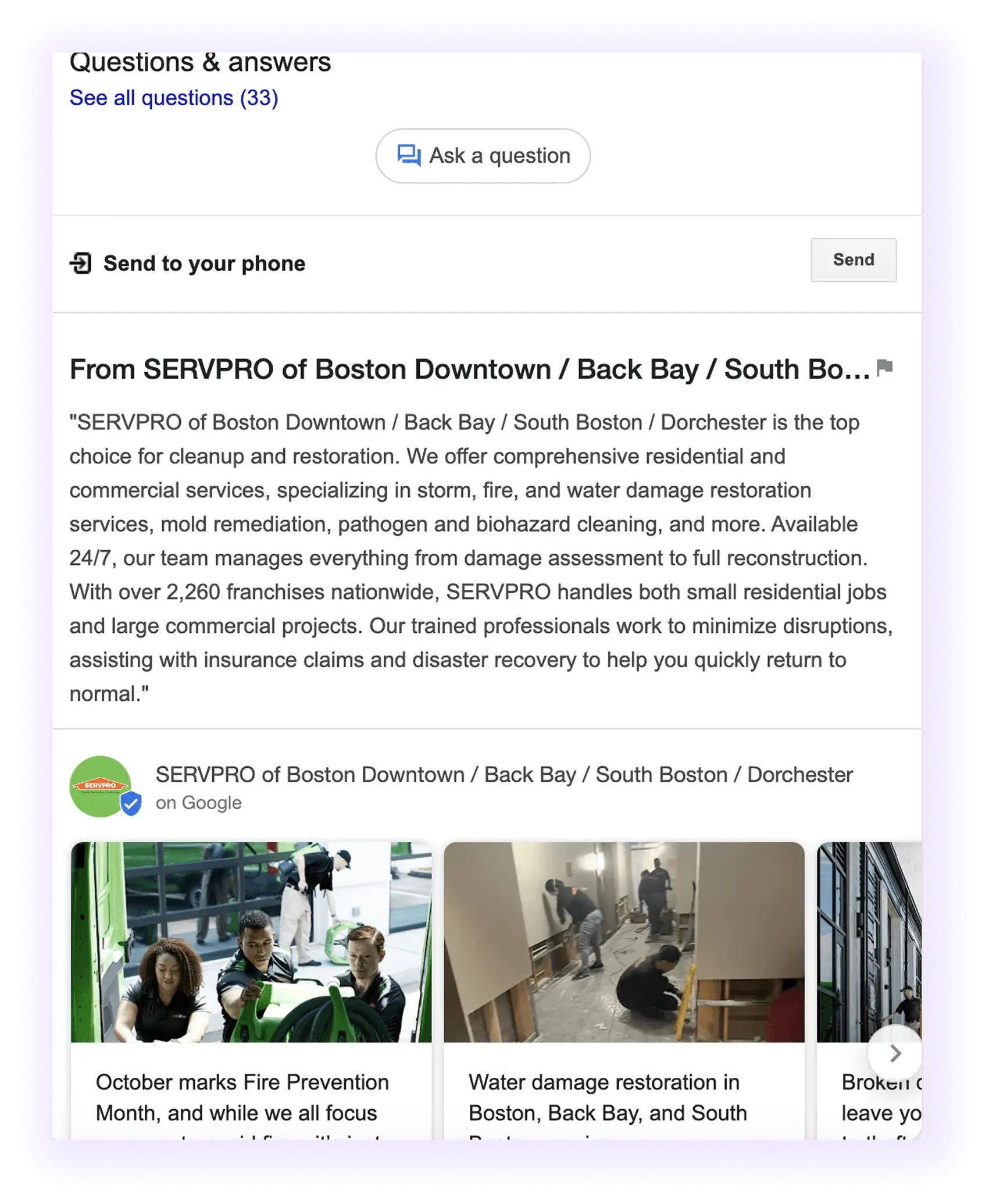

A fully optimized profile helps you rank higher in Maps and turns local searches into real leads.
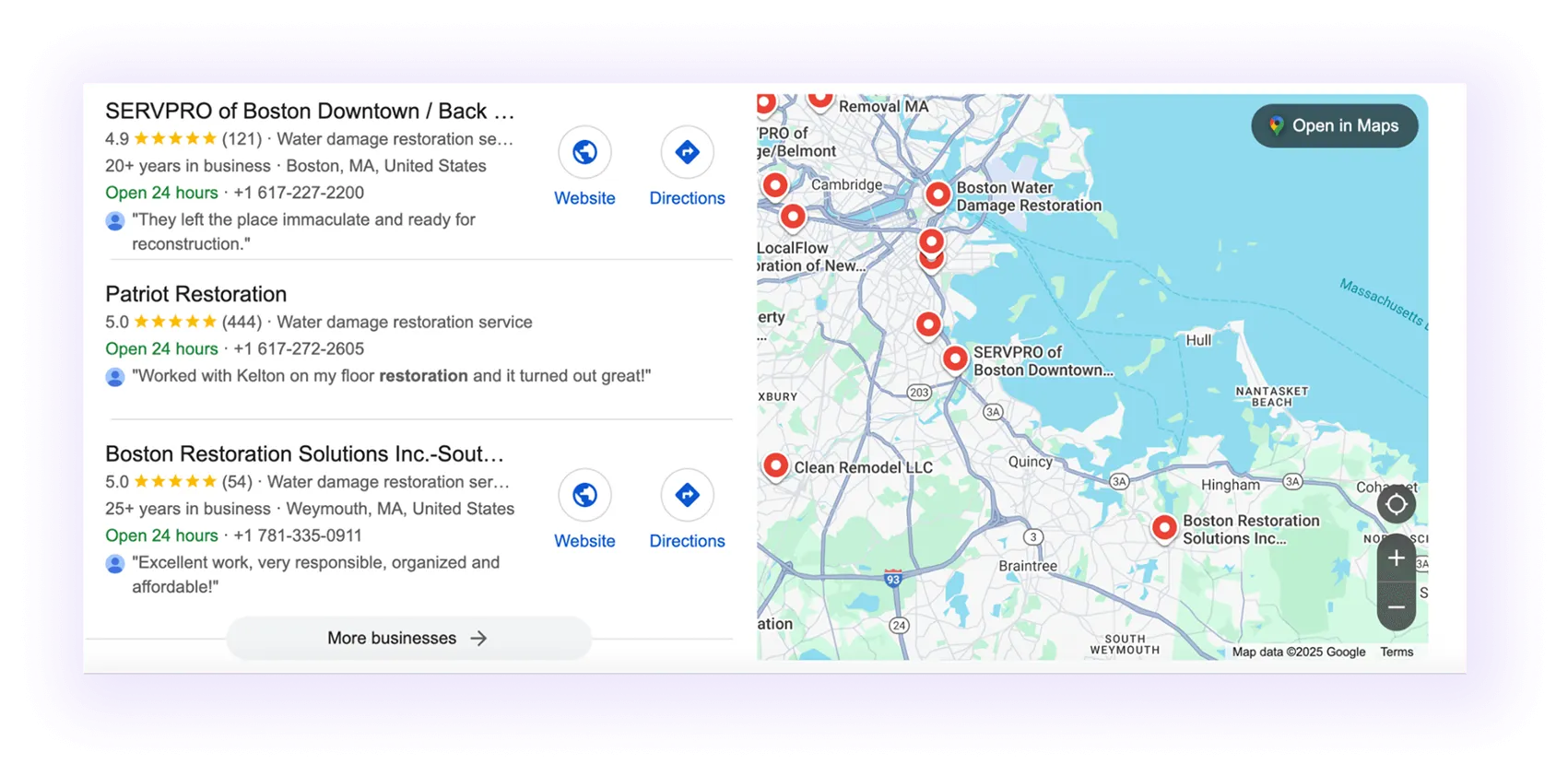
Now Google understands your services and locations, but to rank (and convert), you need great content. Future clients need to see that you know their problems and can fix them fast.
Here’s how to create content that works for both people and search engines:

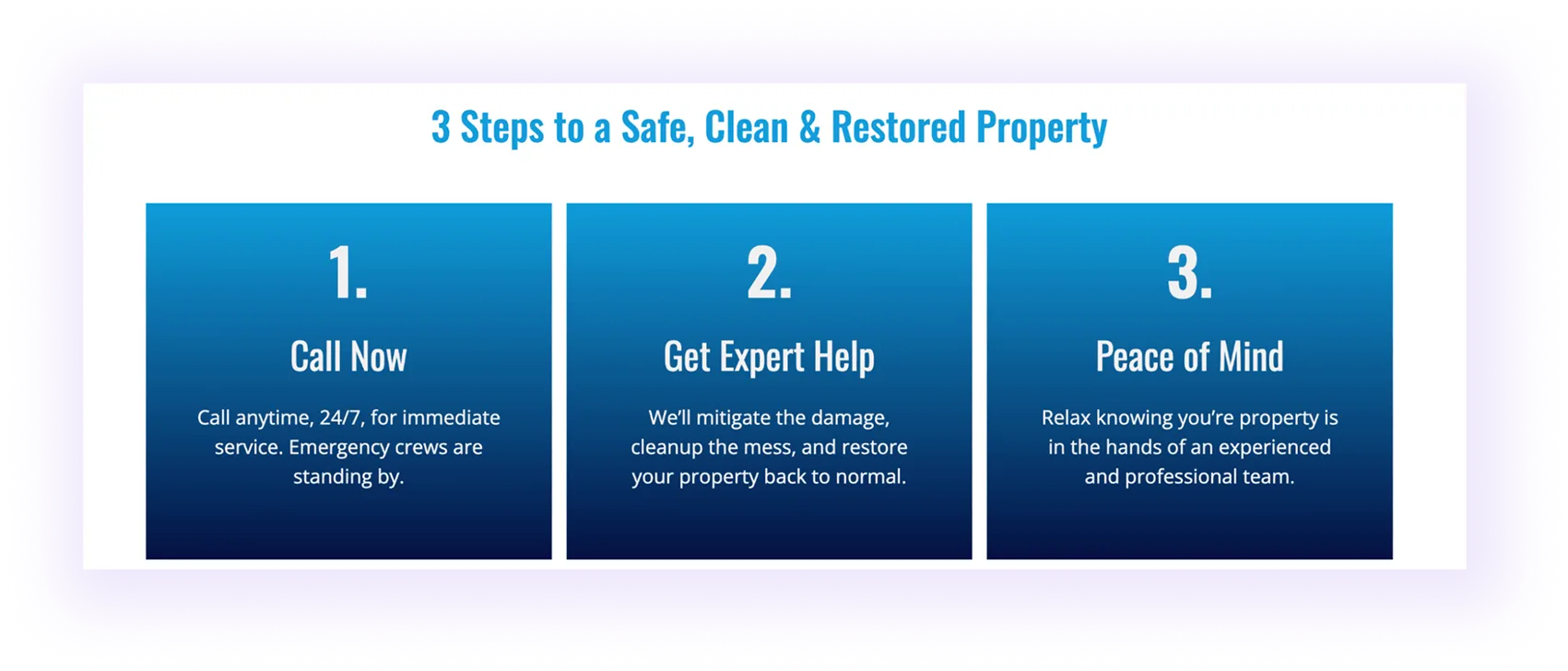

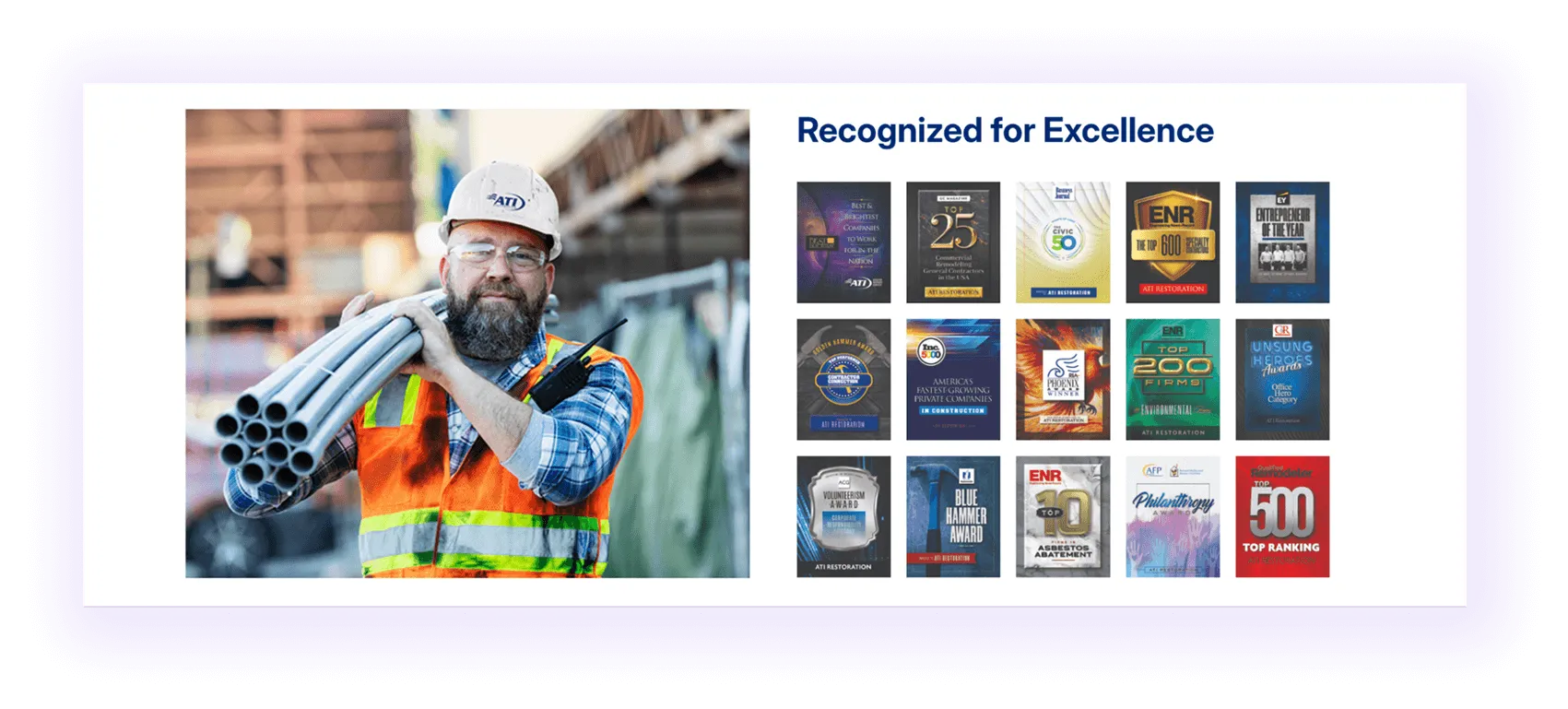
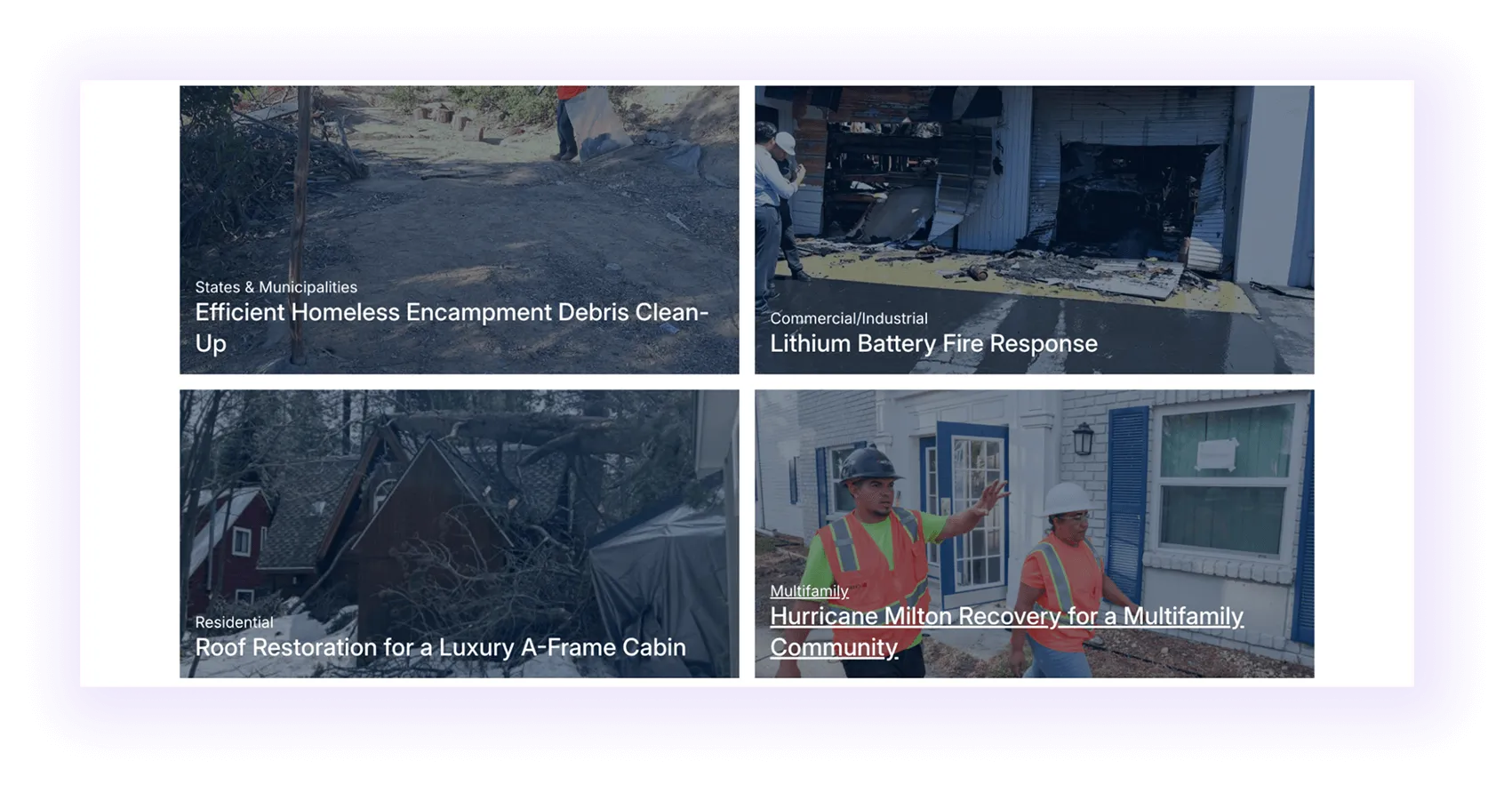
Done right, this content proves your expertise, earns trust, and signals to Google that your site deserves top placement.
Your service pages build trust, but blogs show expertise. They turn your real-world knowledge into helpful advice that brings visitors in before they’re ready to hire.
Here’s how to structure them using the pillar cluster strategy:
Create one main pillar page for each service, for example, “water damage restoration services.”
Then, publish related blog posts that dive deeper into specific questions or problems, such as:
Each blog links back to the main service page, strengthening its authority in Google’s eyes and helping you rank higher for your core keywords.
For topic ideas, start with what your customers ask most (questions about mold prevention, smoke cleanup, or flood safety).
You can also use restoration SEO tools like:
_11zon.webp)
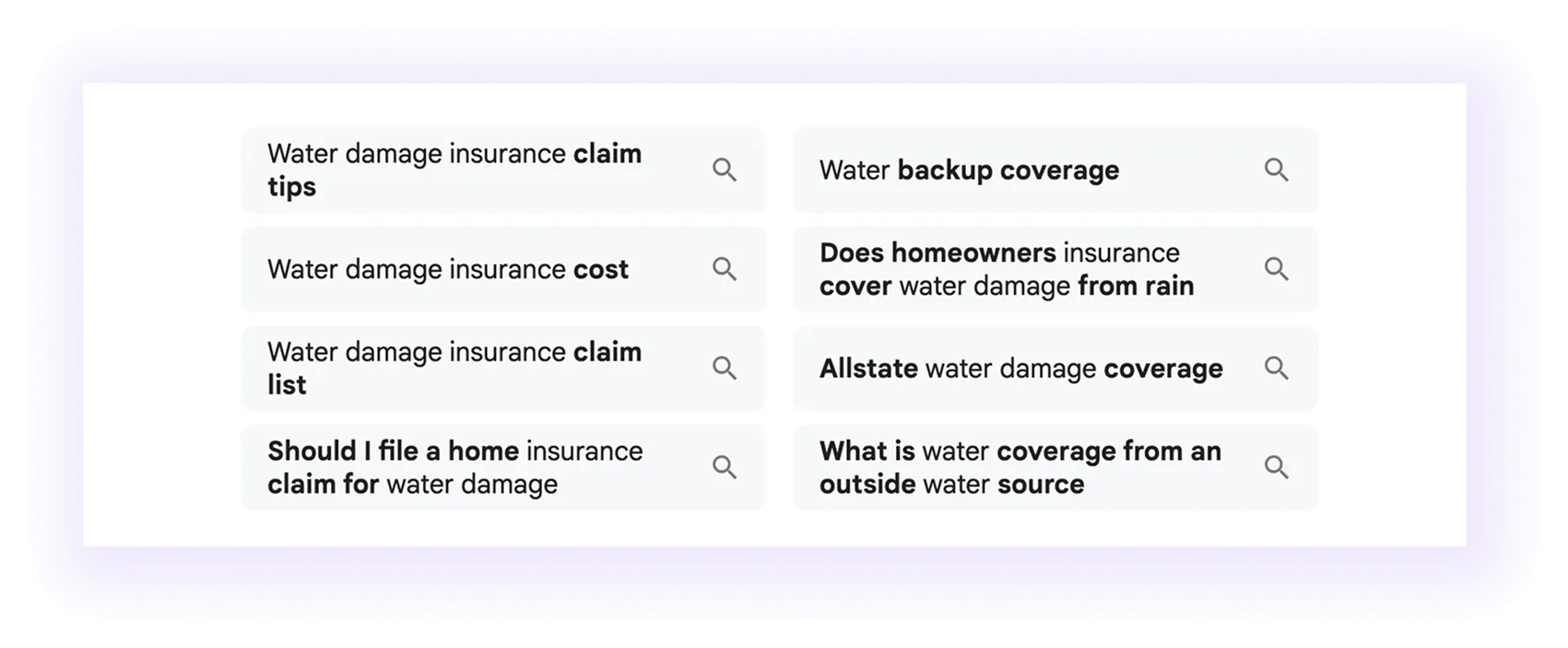
Once you’ve planned your blog topics for your pillar cluster strategy, follow these steps to make sure each post ranks well and delivers real value:
Example of a meta description and title for “water damages”:
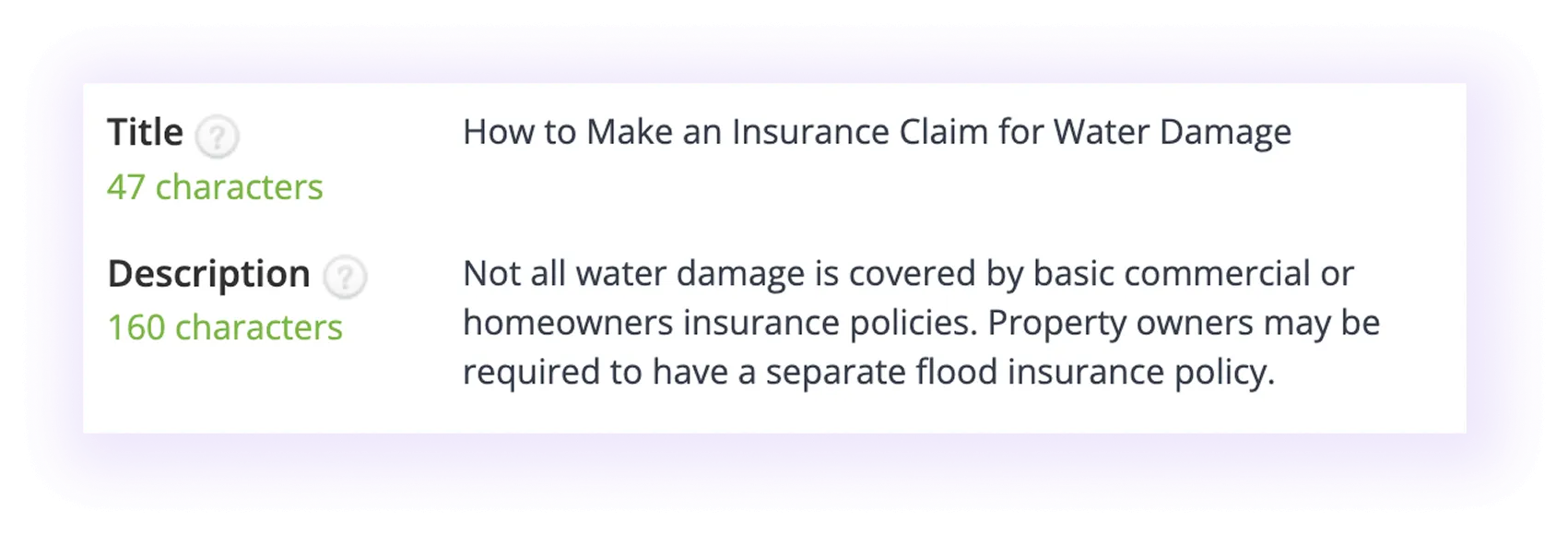
Technical SEO for restoration companies makes sure your site is fast, crawlable, and optimized for visibility. Key elements include:
Next, we’ll break down each of these elements and how to optimize them specifically for restoration websites.
An XML Sitemap gives Google a clear layout of your restoration website, helping it crawl key sections like your homepage, service pages, locations, and blog posts. It also lets you set priority levels so search engines know which pages to index first.
The robots.txt file works as a set of crawling instructions. Use it to block low-value or duplicate pages, ensuring Google’s attention stays on the content that matters most.
Example of XML Sitemap:
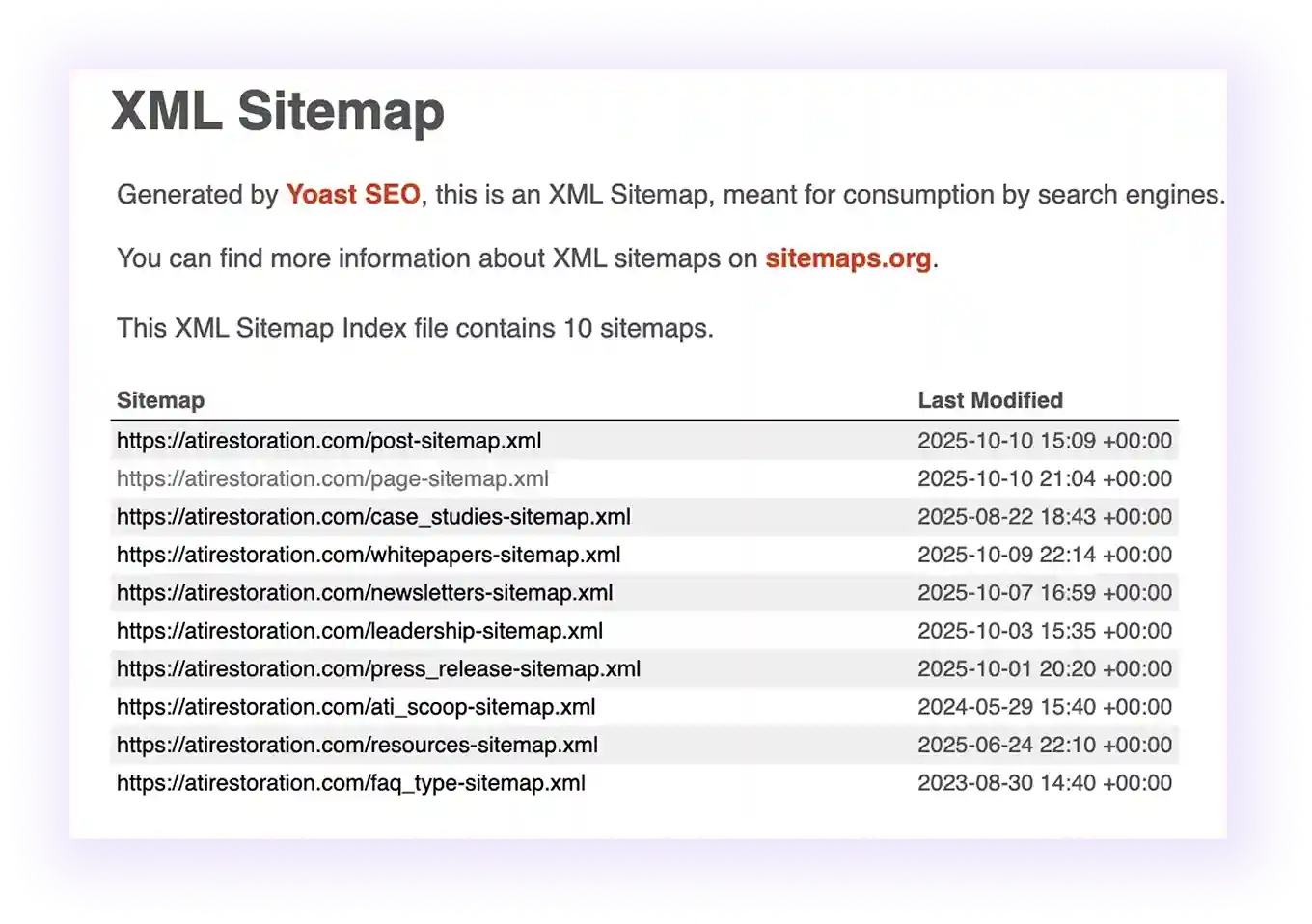
Schema markup helps your restoration website stand out in Google search results by adding rich details like FAQs, reviews, and service info. It also helps Google clearly understand your business type: whether you’re a LocalBusiness or Organization.
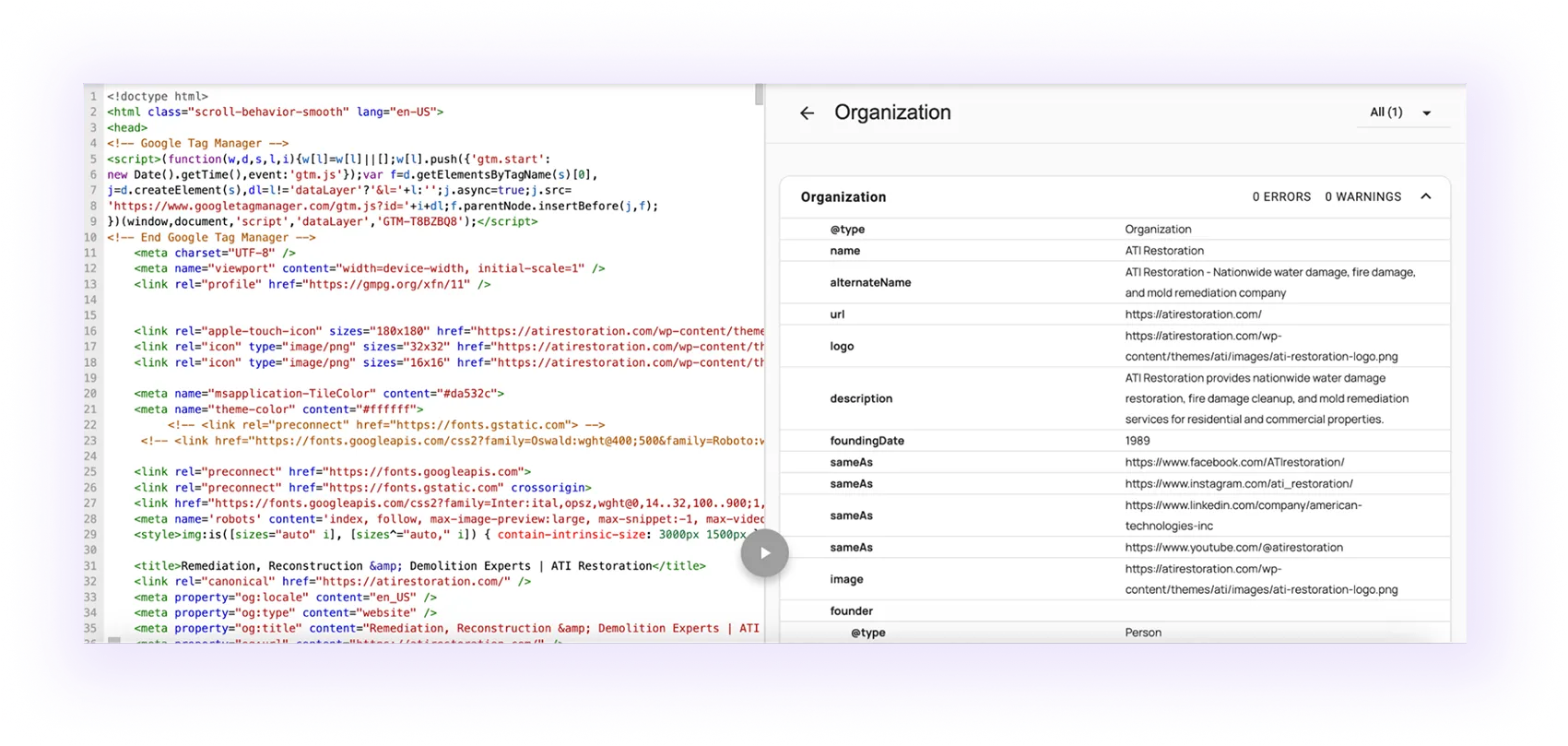
A clean URL structure makes it easier for Google to index and for users to trust you. Follow these simple rules:
Do’s:
Don’ts:
Examples:
SEO-Friendly URL Structure:
https://www.yourcompany.com/services/water-damage-restoration
https://www.yourcompany.com/services/fire-damage-restoration/
https://www.yourcompany.com/locations/flood-restoration-florida/
Non-SEO-Friendly URL Structure:
https://www.yourcompany.com/page?id=4823
https://www.yourcompany.com/Water_Damage_Restoration_In_Houston.html
https://www.yourcompany.com/services123/fire?damage=repair
Internal links help your site work smarter: guiding Google through your pages, helping visitors find services fast, and boosting visibility for competitive keywords.
Here’s how to use them effectively across for your restoration SEO:
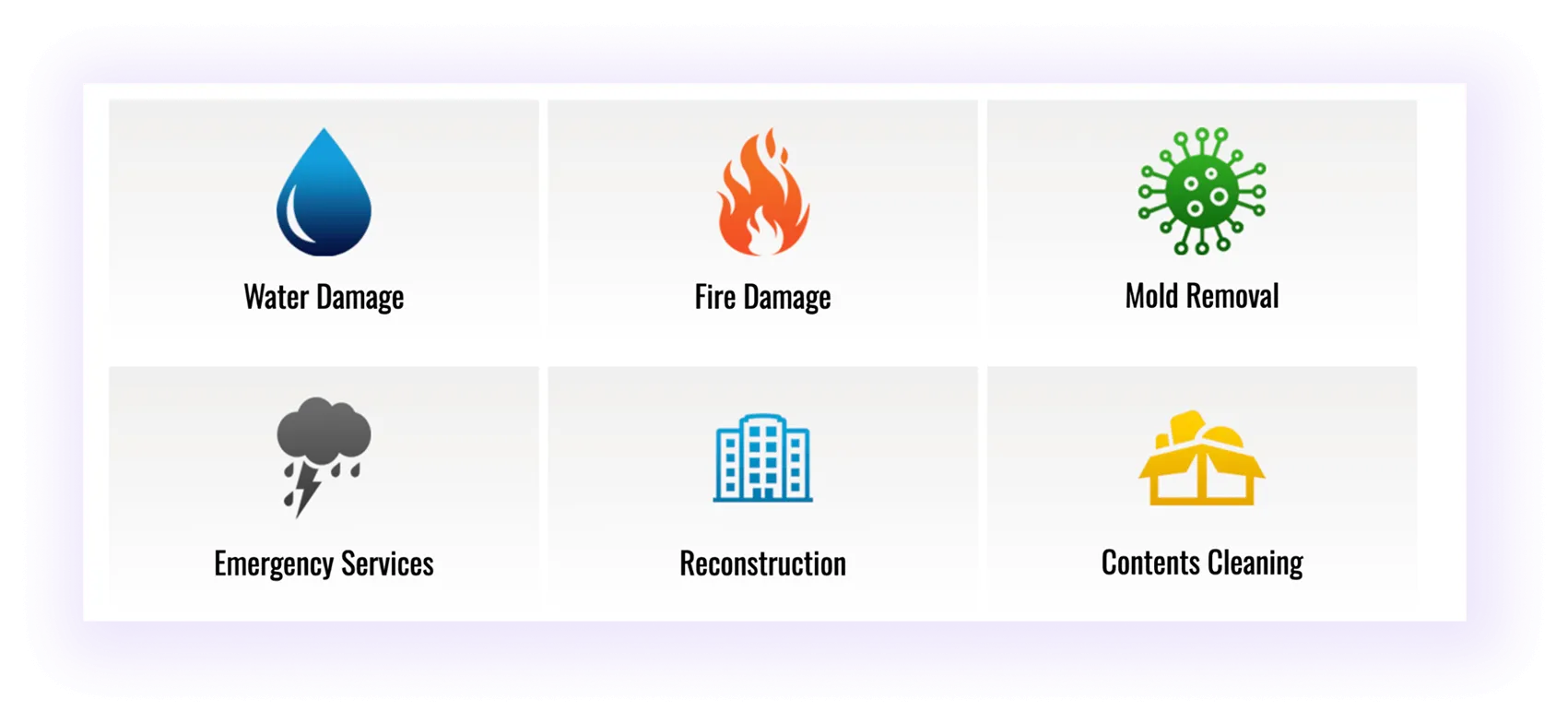
Most restoration leads come from people searching on their phones, often in the middle of an emergency. Your site doesn’t load, they’ll quickly find another.
Key points for mobile optimization:
A mobile-optimized site ensures you’re ready when customers need emergency help anytime, anywhere.
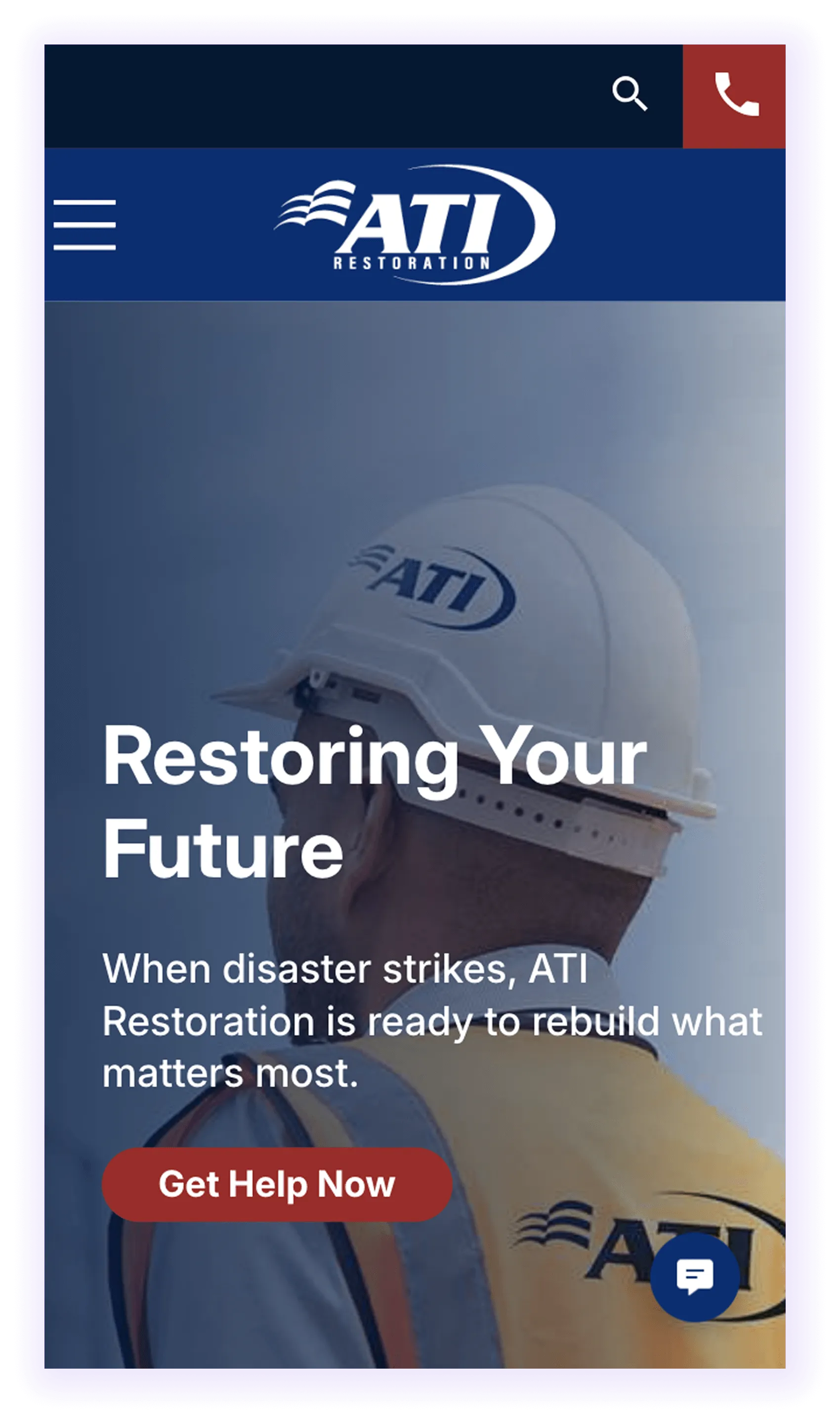
When someone’s property floods or catches fire, they’re stressed, not patient. Your website needs to open fast, display clearly, and feel stable from the first click.
Here’s how to keep it performing at emergency speed:
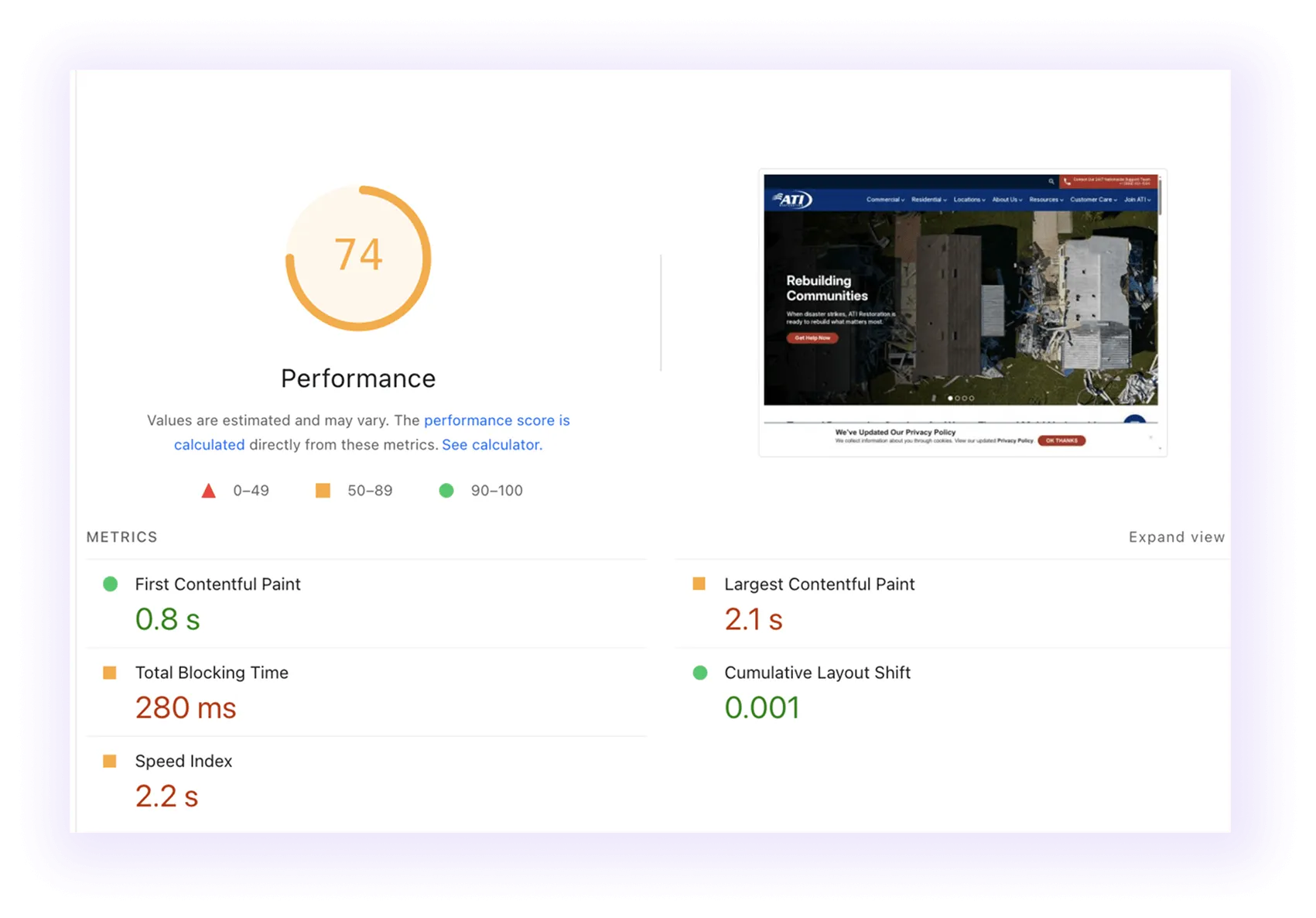
Note: Most restoration sites score 65-80 in PageSpeed Insights, but aim for 90+ to stay ahead.
Pass these benchmarks, and Google will flag your site with “Core Web Vitals Assessment: Passed,” proof that your restoration website runs smoothly, loads quickly, and earns trust when it matters most.
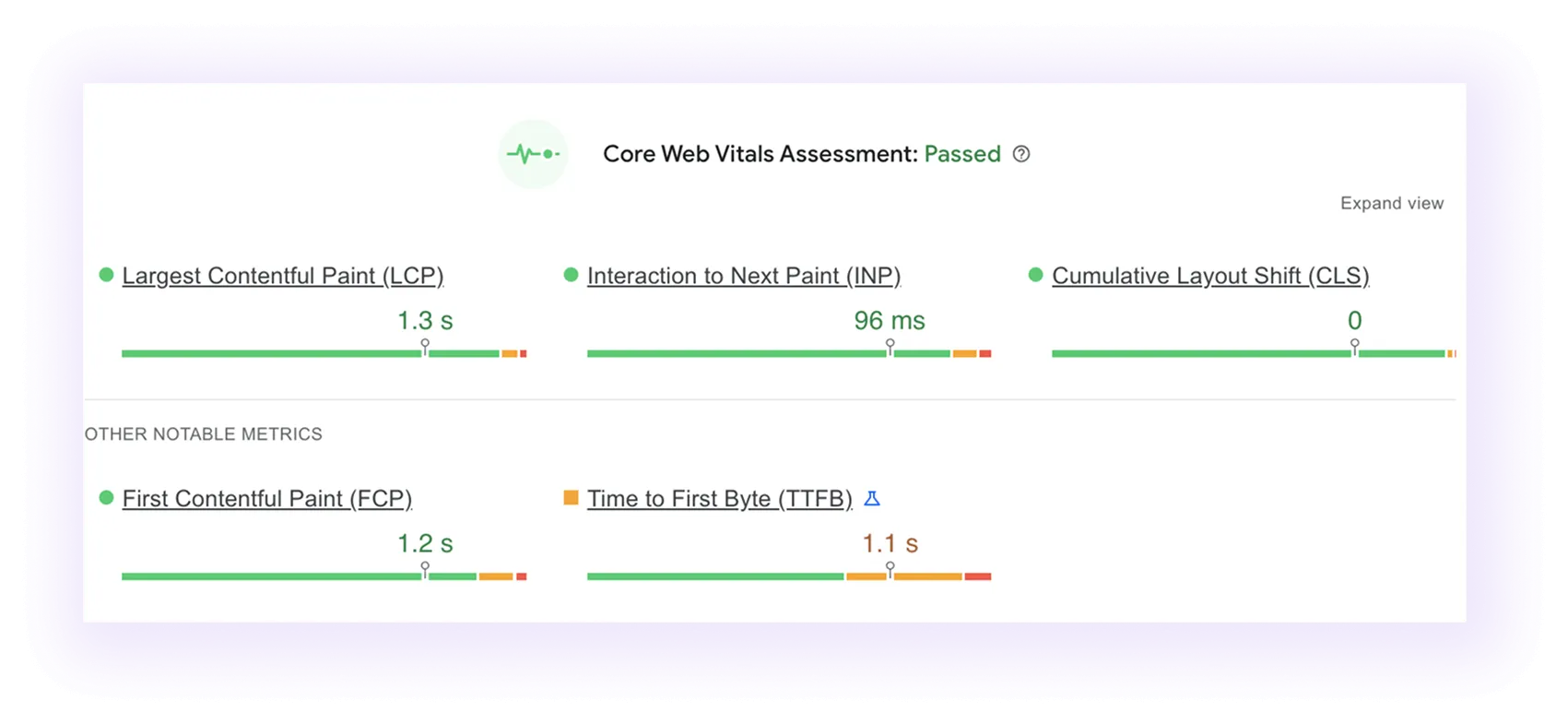
As your restoration website grows with new service pages, images, and locations, performance naturally starts to slip. Regular audits keep it running fast and error-free.
Run a monthly technical audit to catch:
Use tools like Screaming Frog and Google Search Console to spot issues, and track overall site health with Ahrefs Site Audit, aiming for a 99%+ score for top performance.
Rather focus on projects than site fixes? Our restoration SEO team handles the tech audit: keeping your site fast, error-free, and lead-ready.
Even the best on-site restoration SEO needs backup, and that comes from authority. Google trusts websites with strong backlinks from reputable sources. You don’t need hundreds; a few high-quality links to your homepage or service pages can lift your rankings fast.
Here are the three link-building strategies that work best for restoration companies. Now let’s break them down.
Start by finding trusted, high-authority sites related to your industry, such as:
The difference:
In short: guest posting = create new content; link insertion = improve existing content.
Listing your business in reputable directories builds authority and trust fast. Focus on:
To get real SEO value:
Done right, these listings strengthen credibility, build local trust, and improve search visibility.
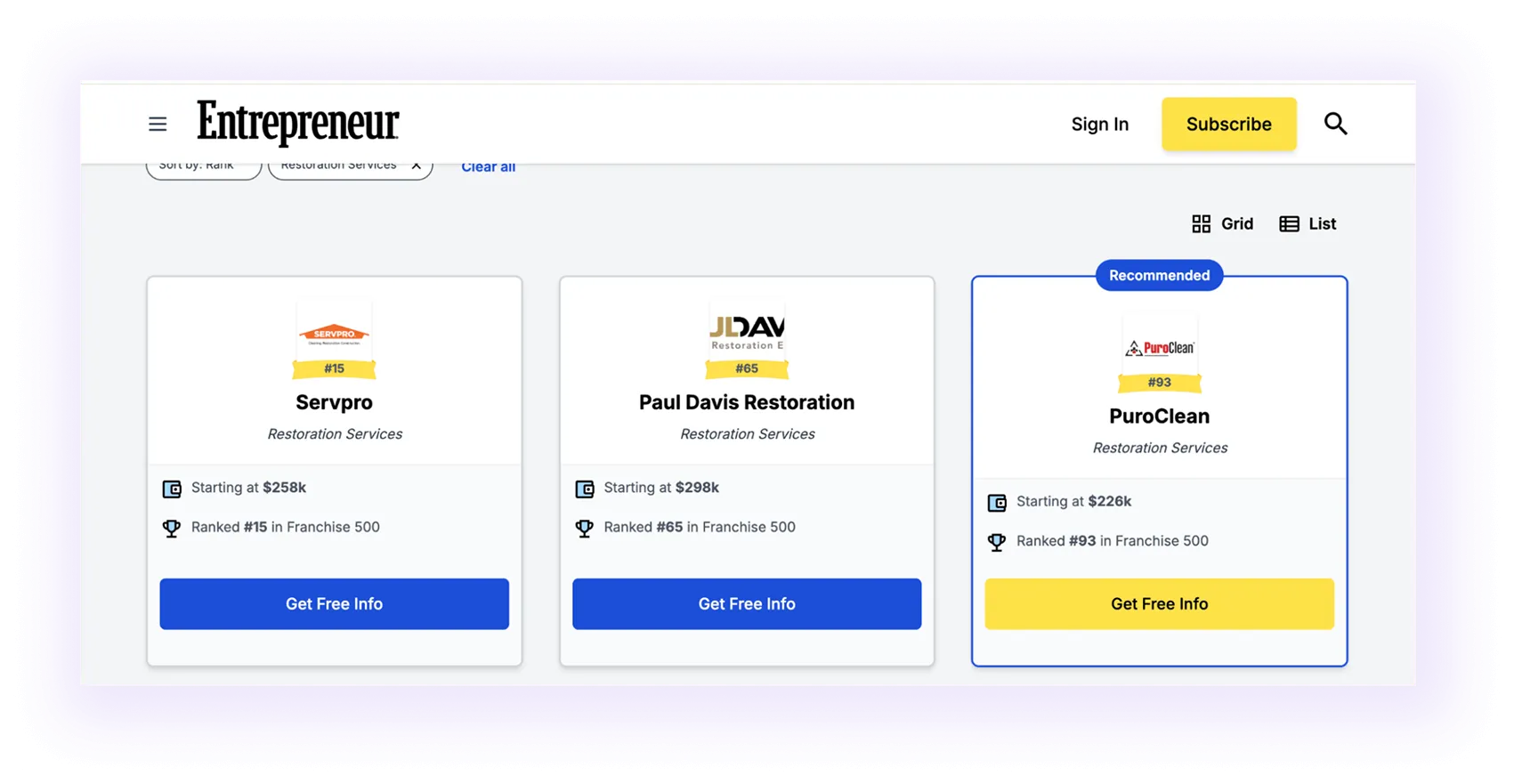
While guest posts and directories help, digital PR delivers the biggest authority boost. It earns backlinks from high-profile sites like:
Links from these outlets can drive results in months instead of a year.
How to do it:
In short, digital PR turns your expertise into shareable, newsworthy content that earns premium backlinks and long-term SEO growth.
Knowing your SEO strategy is working starts with tracking the right metrics:
Here are the best tools to monitor these results effectively:
Using these tools consistently shows what’s working, what needs fixing, and how to keep your restoration site performing at its peak.
If you’re ready to turn your restoration website into a steady source of calls and local visibility, we’ve guided 90+ restoration businesses through the same process. Contact us, and you can apply these steps with the same success.
Submit the form - Get Free Proposal
%202.png)
24 hours